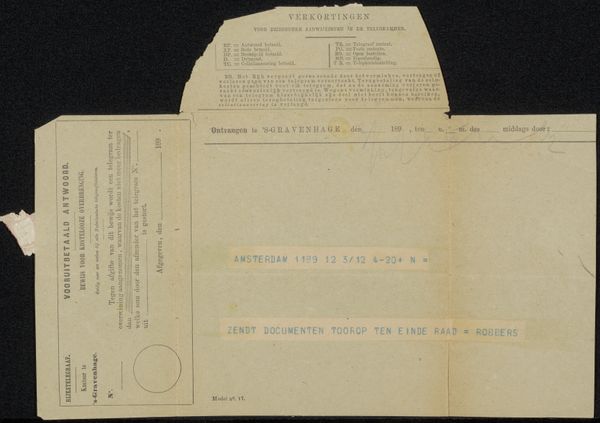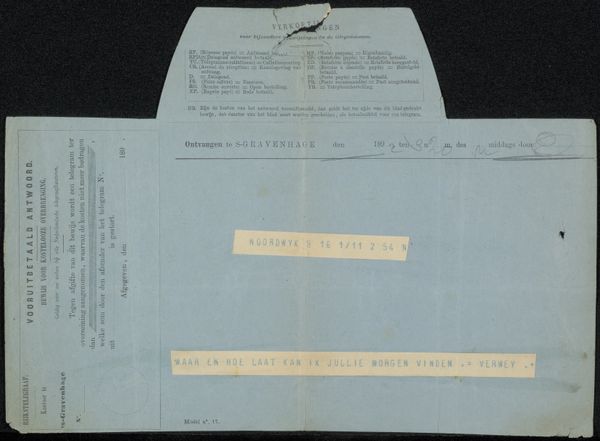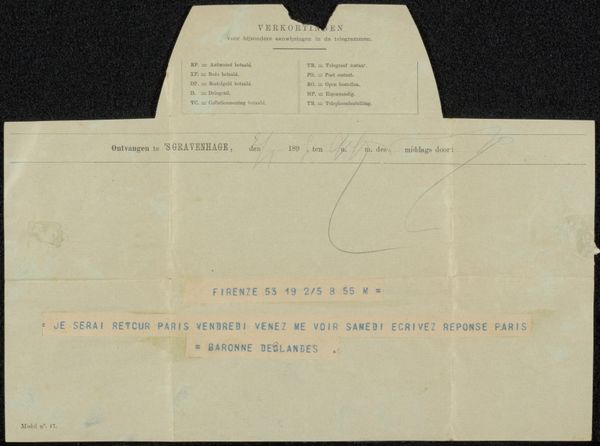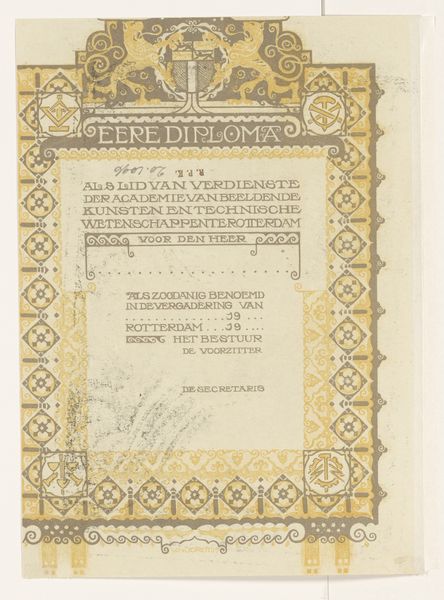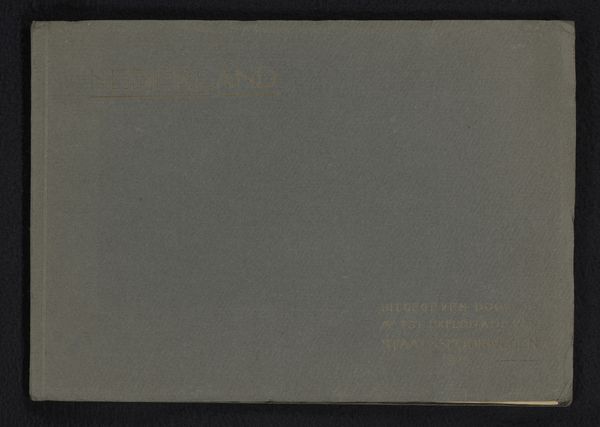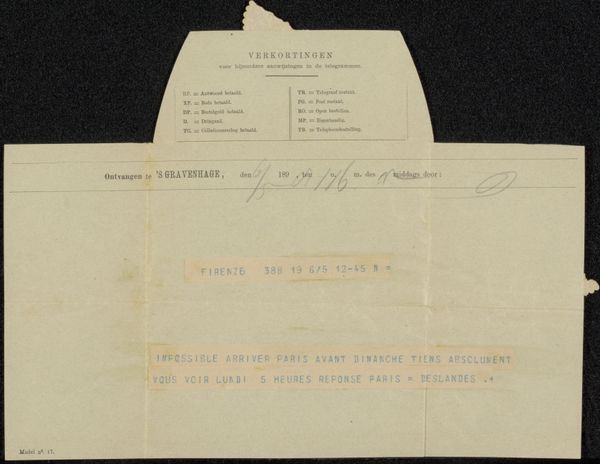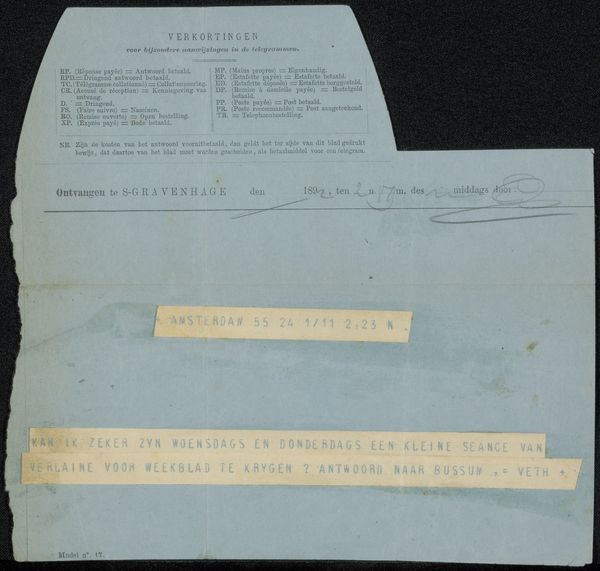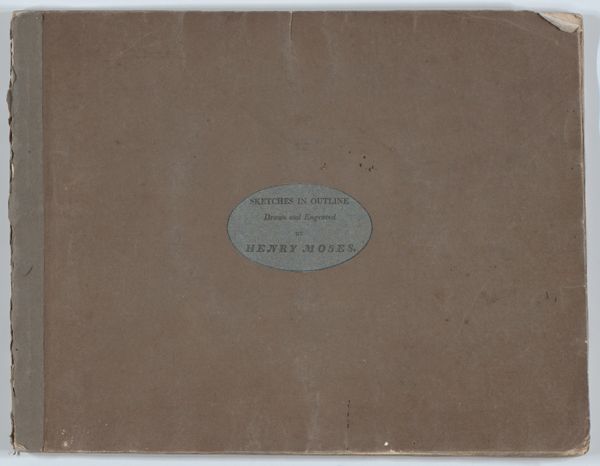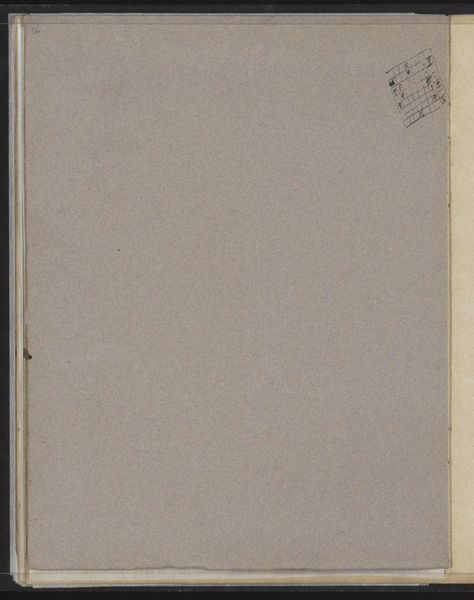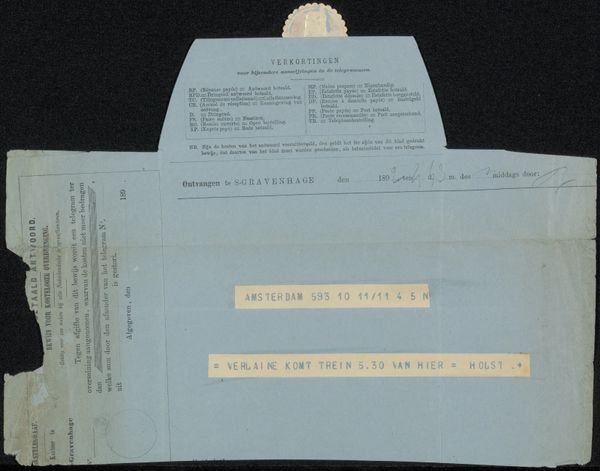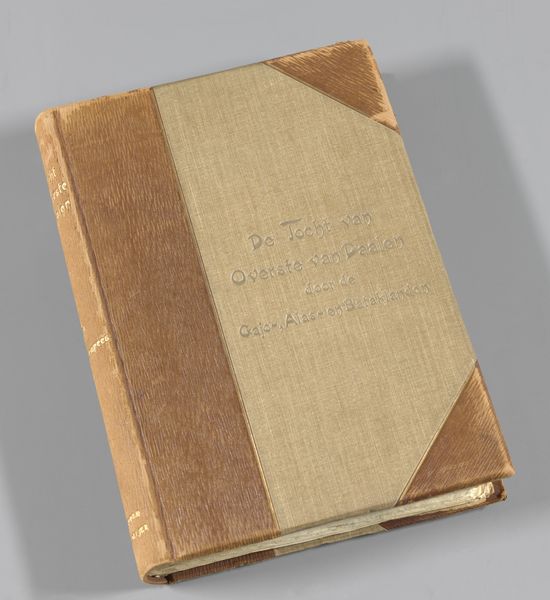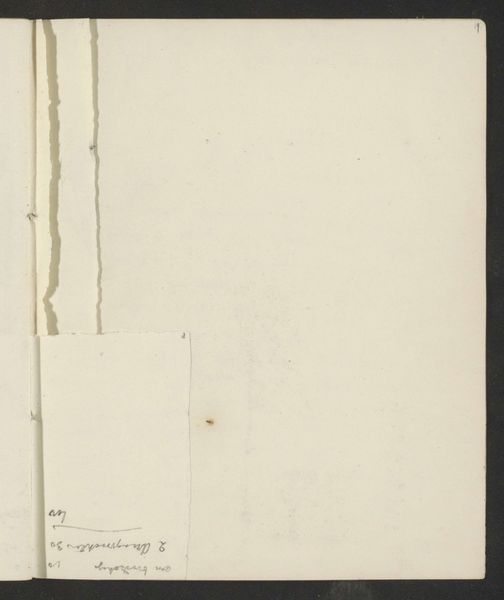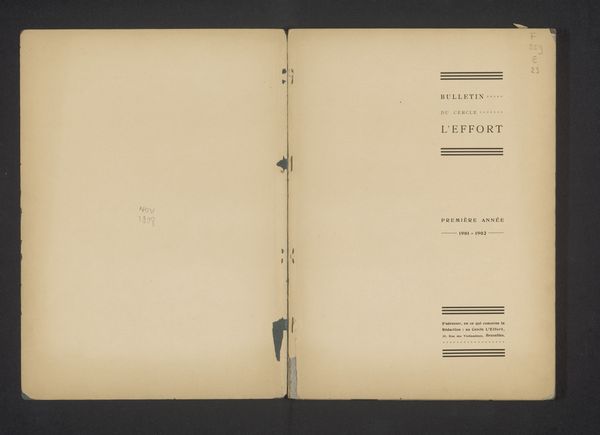
print, textile, photography
#
aged paper
#
script typography
# print
#
sketch book
#
hand drawn type
#
textile
#
personal journal design
#
photography
#
personal sketchbook
#
hand-drawn typeface
#
fading type
#
sketchbook drawing
#
russian-avant-garde
#
sketchbook art
Dimensions: height 258 mm, width 196 mm, thickness 5 mm
Copyright: Rijks Museum: Open Domain
Curator: Looking at this aged document, I find myself immediately drawn in. The cover design has a distinctly antique quality, evoking images of scholarly texts from a bygone era. Editor: Indeed, this is "Chudozestvennaja fotografia besbavi pajzazista", dating back to 1907. We attribute this work to Nicolas de Bobir, and from what we gather, it exists as a print on textile or paper. Curator: The geometric framework encapsulating the text hints at the modernist sensibilities beginning to percolate in the early 20th century. The framing is a visual metaphor – a contained intellectual space. What strikes you? Editor: Well, the Cyrillic script itself carries immense weight, acting as a cultural signifier of the Russian-Avant-Garde movement. This invokes revolutionary sentiments of a shifting world order. But I’m especially interested in how ‘photography’ is written: "chudozestvennaja-fotografia". The hyphen signals the debate on whether photography is indeed art, suggesting the era’s cultural anxieties of emerging artistic forms. Curator: An excellent point! This would likely engage the discourse on art versus documentation, something central to the public perception of photography at the time, when photography and textile as reproductive media challenged elitist models of cultural value, opening art consumption to more popular audiences. I noticed what appears to be some type of stamp or official marking too. Editor: Precisely. The seal, though faded, suggests institutional approval or cataloging—reinforcing its importance within specific circles. Moreover, the phrase, "Besbavi Pejzazista"—"conversations with landscape painters," points to dialogue, discourse, and knowledge exchange among landscape artists. The faded quality only strengthens the work's inherent romantic symbolism. Curator: That seal probably shows the book had value beyond its content: social capital for artists, scholars, and their social networks. Thinking of our audiences, this print provides a fascinating window into early 20th century intellectual life, one shaped by discussions, the struggle of representation, and nascent cultural identity. Editor: Agreed, it encourages a deeper consideration of the relationship between photography, artistic legitimacy, and societal development and reveals layers of cultural meanings through time. It's a subtle but rich invitation for modern viewers.
Comments
No comments
Be the first to comment and join the conversation on the ultimate creative platform.
